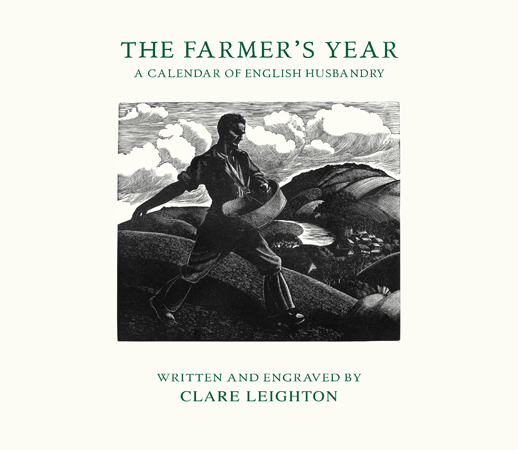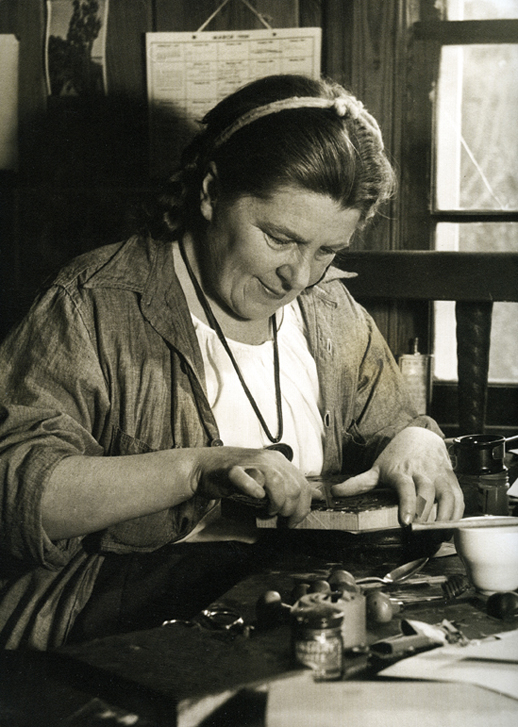The Farmer’s Year: A Calendar of English Husbandry by Claire Leighton (Little Toller, 2012).
Review by Justin Partyka
2013 marks the eightieth anniversary of the first publication of Clare Leighton’s book The Farmer’s Year: A Calendar of English Husbandry. But this new edition published by Little Toller in October 2012 should not be seen as merely an act of timely celebratory. The book doesn’t need that. This is a timeless piece of work in the truest sense, which shows no sign of being stuck in the 1930s. Having spent ten years photographing a number of East Anglia’s remaining agrarian farmers, from my experience this story of the farmer’s year is familiar and contemporary. I know farmers who are just like those Leighton describes in her book: humble, deeply rural, and intimately shaped by a life spent on the land.
Leighton was inspired to begin work on the book in the early 1930s as a response to her concern about the loss of the traditional ways of agriculture that she noticed was taking place in England at the time. The Great Depression was destroying the bucolic life of the countryside. Farms were going bust, farm workers were forced off the land, and the English breadbasket could not provide food. Leighton had travelled widely in Europe and had great affinity for the rural people she encountered and an understanding of the peasant way of life. She brought this experience to The Farmer’s Year to create a beautiful and sympathetic narrative that says ‘look at what is being lost.’ There is a strong sense of the ways of the farmer being deeply rooted in history. Leighton describes the sound of threshing as “eternal” and goes on to suggest that “For all sounds of the labours on the land date from the beginning of time.” The three main reoccurring themes of the book are the changing seasons of the year, the rhythms of the work, and the harmonious relationship between man and the natural world. The men’s actions during the sugar beet harvest conjure up the routine “of some old folk dance.” The orchard man, Old Tom Latimer has come to resemble “one of his own apples, red lacquer stains each cheek, wizened as an apple forgotten in the loft.” And when the men go home from the land, the rooks go home too.
To simply call this a book is really not adequate enough. The Farmer’s Year is a work of art. Leighton was a skilled writer but her greatest accomplishment was as a wood engraver for which she received high profile recognition both in the UK and her adopted home of America where she emigrated in 1939. Here each month of the year is given its own chapter focusing on a different aspect of seasonal work. The chapters begin with an almost full-page-size woodblock plate illustrating the work described in the text. These plates really are the heart of The Farmer’s Year. They are exquisite in their simplicity, but also highly detailed, revealing that Leighton had a deep understanding of the aesthetics of her subject. February is the time of willow lopping and the image is an endless array of sweeping curves – the only straight lines being the manmade ladders. The striding farmer hand sowing his field illustrated in the plate for April (and featured on the cover) is iconic and immediately made me think of the Neil Young and Crazy Horse recent masterpiece ‘Walk Like A Giant.’
The format of The Farmer’s Year is a new and welcome departure from Little Toller’s previous books. It is hardcover with a dust jacket and presented in landscape orientation measuring 295 x 255 mm. And is beautifully printed in Italy on 150 gsm paper. In some of Little Toller’s other books I have sometimes wished that the art work was given greater emphasis so that there is more of a balance between words and images. But there is no sign of this in The Farmer’s Year as the text and artwork are both given equal consideration and compliment each other perfectly. There is no doubt that this is what Leighton always intended.
Justin Partyka is a photographer living in East Anglia. For information about his work visit his website.
The Farmers Year can be bought from the Caught by the River shop, priced £20.

